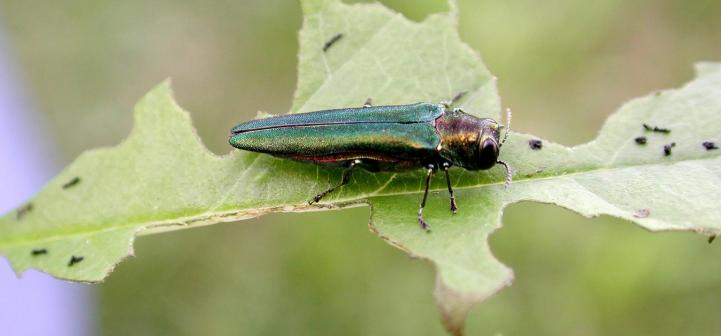Invasive Species: Hyoscyamus niger, Black Henbane
Black henbane is an invasive annual or biennial plant that can grow to 3 ft. (1 m) in height. The fetid-smelling leaves are alternate, simple, toothed, up to 8 in. (20 cm) long, and 6 in. (15 cm) wide. In the early season (annual), or first year of growth (biennial), the plant is represented by a rosette. Flowering occurs in spring to early fall. Flowers are cream to green, five-lobed, 2 in. (5 cm) wide, and have purple throats. Seeds are small and black. Prolific seed production increases the spread of this plant, as a single plant can produce up to half a million seeds. Black henbane is native to the Mediterranean and is poisonous to most mammals. It has been used medicinally for hundreds of years.
What are invasive species and why should we be concerned about them?
Taxonomy: Scientific and Common Names for This Species
Solanales > Solanaceae > Hyoscyamus niger L.
Synonym(s): henbane
Hyoscyamus niger – USDA PLANTS Profile
Distribution Maps
Black henbane – The reported distribution of this invasive species across the United States (Source: Invasive Plant Atlas of the United States)
Up-to-the-minute distribution maps and why they are important
Reporting This Invasive Species
What is the best way and place to report the occurrence of an invasive species?
How to report an invasive species sighting to EDDMapS – Early Detection & Distribution Mapping System
EDDMapS – Report an Invasive Species to EDDMapS.
Cooperative Extension Offices – Find your local Cooperative Extension office on this map provided by USDA.
How to Identify
This invasive species can be identified by looking for the characteristics described in the paragraphs that follow.
Plant
Black henbane is an annual or biennial plant that can grow to 3 ft. (1 m) in height.
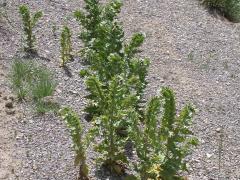 |
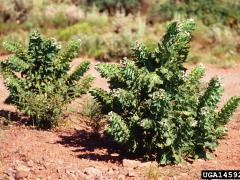 |
| Mary Ellen (Mel) Harte, bugwood.org | Steve Dewey, Utah State University, bugwood.org |
Foliage
The fetid-smelling leaves are alternate, simple, toothed, up to 8 in. (20 cm) long, and 6 in. (15 cm) wide. In the early season (annual), or first year of growth (biennial), the plant is represented by a rosette.
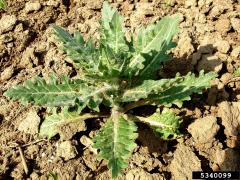 |
 |
| Jan Samanek, State Phytosanitary Administration, bugwood.org | Jan Samanek, State Phytosanitary Administration, bugwood.org |
Flower
Flowering occurs in spring to early fall. Flowers are cream to green, five-lobed, 2 in. (5 cm) wide, and have purple throats.
 |
 |
| Mary Ellen (Mel) Harte, bugwood.org | Jan Samanek, State Phytosanitary Administration, bugwood.org |
Fruit
Seeds are small and black. Prolific seed production increases the spread of this plant, as a single plant can produce up to half a million seeds.
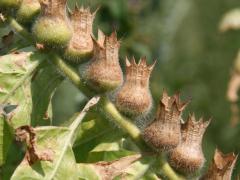 |
 |
| Robert Videki, Doronicum Kft., bugwood.org | Steve Hurst, USDA NRCS PLANTS Database, bugwood.org |
Native Species That Can Resemble Black Henbane
– Images at invasive.org
| bugwood.org | bugwood.org |
– Images at invasive.org
| bugwood.org | bugwood.org |
Additional Images for Black Henbane
Black henbane – Images at Invasive.org
Additional Information, Biology, Control and Management Resources
Control and management recommendations vary according to individual circumstances. Location, habitat, weather, and a variety of other conditions are factors that help determine the best treatment choice. To find the safest and most effective treatment for your situation, consult your state’s land-grant institution. If you will use chemicals as part of the control process, always refer to the product label.
United States Land-Grant University System – Find your land-grant university’s college of agriculture, Cooperative Extension office, or other related partner on this map provided by USDA.
Fact Sheet – University of Nevada, Reno
List B Species – Colorado Dept. of Agriculture
Idaho’s Noxious Weeds – Idaho Association of Soil Conservation Districts
MontGuide – MSU Extension
